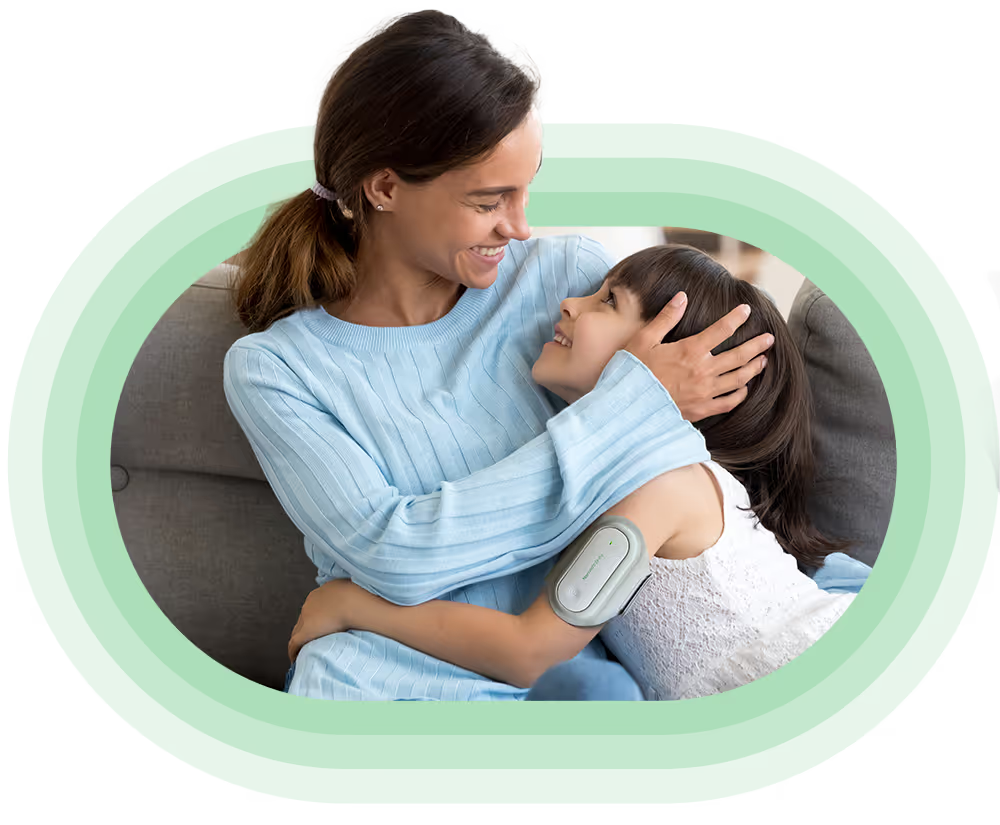Does your insurance cover non-drug, non-disruptive migraine treatment?
They should.


Affordable access to the Nerivio® REN wearable for patients 8+ living with migraine disease
The FDA-cleared NerivioREN wearable is an effective and life-changing migraine treatment for adults and children as young as 8 years old. However, for too many people, access to the Nerivio REN wearable does not exist since insurance companies are not covering the cost of the treatment. No one should have to face the choice between paying high out-of-pocket costs or going without essential migraine care, especially children and adolescents.
Insurance denials are on the rise—77% of healthcare providers report more denials than ever—but continued advocacy elevates your voice.2 By taking action, you’re not only helping yourself, you’re helping secure accessible, affordable migraine care for all.
Based on Strong Scientific Evidence
Studies demonstrate that Nerivio provides safe and consistent migraine relief in the clinical and real-world setting. Data from our 22 peer reviewed publications include:
Achieved pain relief with Nerivio
Demonstrated sustained pain relief and pain freedom at 24 hours
Achieved higher relief with Nerivio than with medications*
Reduction of 4 migraine days per month
Experienced ≥50% reduction in moderate to severe headache days
No device-related adverse events reported in the clinical study
Achieved pain relief with Nerivio
Achieved pain freedom with Nerivio
Did not use prescription medications
You are not alone. Others living with migraine are navigating access and affordability too.
Resources to help you get affordable access to the Nerivio REN wearable
Q: I heard the Nerivio REN wearable is the only preventive treatment and the first non-drug acute treatment that is FDA-cleared for ages 8 and above. Do you think my child could benefit from this treatment?
Q: How would the Nerivio REN wearable integrate into my existing treatment plan?
Q: Are there side effects I should be aware of with Nerivio?
Q: How do I check if my insurance covers the Nerivio REN wearable?
Q: Can you confirm my plan covers the Nerivio REN wearable?
Q: Does my plan require prior authorization for the Nerivio REN wearable?
Q: What would my out-of-pocket costs be for the Nerivio REN wearable?
Q: The FDA cleared the Nerivio REN wearable for use in patients ages 8 and above. Can you tell me if my plan coverage has been updated to reflect this new clearance?
Interested in how to approach your insurance company? Download a sample letter to see how others have communicated with their insurers for coverage.
Please note, this is for reference only and not intended to be copied directly.
Get detailed information about Nerivio and a prescription form you can share directly with your healthcare provider to get started
Treat and prevent migraine safely and effectively
Fill out the form to check coverage or connect with the Nerivio team
References
- Kabbouche et al, “Management of migraine in adolescents”, 2008.
- Experian Health, “State of Claims 2024: Insights from survey findings”, 2024.
- Charles et al, "Favorable outcome of early treatment of new onset child and adolescent migraine-implications for disease modification", 2009.
- Werner et al, "Acute treatment of migraine in children aged 6–11: Real‐world analysis of remote electrical neuromodulation (REN)", Annals of the Child Neurology Society, 2024.
- Hershey et al, "Remote electrical neuromodulation for acute treatment of migraine in adolescents: A randomized, double-blind, sham-controlled study", Headache, 2020.
- Hershey et al, "Remote electrical neuromodulation for acute treatment of migraine in adolescents: Post hoc analysis of a randomized controlled trial", Pain Medicine, 2021.
- Tepper et al, "Remote electrical neuromodulation for acute treatment of migraine: A real-world analysis", Headache, 2023.
- Yarnitsky et al, "Nonpainful remote electrical neuromodulation for acute treatment of migraine: A multicenter, double-blind, randomized study", Neurology, 2019.
- Aliai et al, "Remote electrical neuromodulation for migraine treatment: A systematic review and meta-analysis", The Journal of Headache and Pain, 2022.
* In a post-hoc analysis, 71.4% of patients achieved pain relief vs 57.1% of patients with medications (p<0.001).











